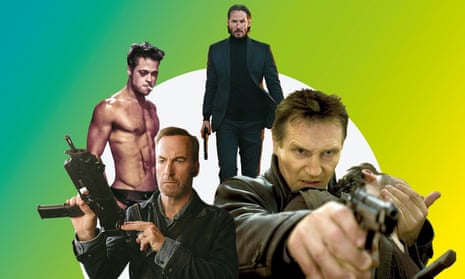Nobody is what you might call a “finding your balls” movie. Bob Odenkirk plays a meek, middle-aged dad who doesn’t fight back when robbers invade his home. Everyone thinks he is a total wuss: the police, the neighbours, even his own family. But then he does fight back, rampaging through a succession of gleefully violent fight scenes until there’s barely an anonymous Russian mobster left walking. “There’s a long-dormant piece of me that’s now awake,” he says. He is living his best life. His family respects him. His wife finds him attractive again. He’s found his balls.
If Nobody sounds a little like a Keanu-less John Wick, that might be because it comes from the same producer (David Leitch) and writer (Derek Kolstad), although they got a little input from Odenkirk himself, who suggested the story after a real-life break-in at his home, which left him “wishing for some vengeance”. Rather than take his rage on to the streets, Odenkirk channelled it into a movie.
Vengeance seems to form the basis of so many male-fronted films: with Liam Neeson’s character in Taken it was his daughter’s kidnapping; in Falling Down it was the violation of Michael Douglas’s consumer rights; with Dustin Hoffman in Straw Dogs and Charles Bronson in Death Wish it was home invasion and sexual violence, and so on. And what do these men do? They pick up a weapon and reconnect with their killer instincts.
The implication is often that behind the characters’ meek, civilised exteriors, these men – all men – are mighty warriors who have been tamed into lives of careerist conformity and domestic subservience. And reverting back to base instinct feels really good. This is essentially the plot of Fight Club: inside every dweebish Ed Norton there is a super-cool, super-violent Brad Pitt waiting to be unleashed. Guys, what are we waiting for?
The question is always whether these movies serve as a warning against such impulsive, often fascistic forms of violence, or whether they inspire them. Looking at the current climate of “toxic masculinity” – misogynistic online abuse, sexual misconduct and violence (not least in the entertainment industry), strongman politicians, and gun-toting insurrectionist bros doing military cosplay – one would hardly surmise that what the world needs now is more old-school manliness.
Nobody doesn’t offer a particularly nuanced take on these issues, but its artfully orchestrated ultraviolence is cathartic, which is where these films can have a useful function. Then again, it’s a pretty reductive view of masculinity that says you’re either a castrated loser or a rampaging warrior, a sheep or a wolf, a Norton or a Pitt. Other forms of manliness are available – ones that engage the brain as well as the balls.
